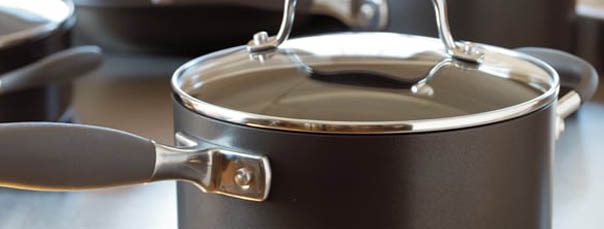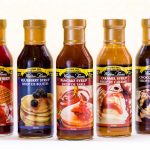
How to Choose Quality Cookware for Your Kitchen
How to Choose Quality Cookware for Your Kitchen
Having the right tools and equipment on-hand in your kitchen can make a huge difference in the food you cook, and how much you will actually enjoy cooking it. Most of us become quite accustomed to the kitchen supplies that we have on-hand, and when we finally do purchase an upgrade, it can be quite surprising just how much better things work. It can be something as simple as the shape of the pan, or the materials it’s made of, regardless, the right tools make cooking easier and more fun.
In this article, we’re going to go through some details on what to look for if you’re considering upgrading your cookware. We will cover everything from the basic types of cookware, to materials, and even some of the most popular brands to consider. With these tips, you’ll be sure to find the best cookware for your low carb kitchen!
Cookware Categories
Cookware can easily be broken down in to just a few main categories, usually based on the function they serve and whether or not they are intended to be heated. The main categories of cookware that most items will organized into are:
Pots & Pans
When something needs to be boiled, fried, simmered, or sautéed, this is the category you’ll be looking at. Pots and pans come in a wide variety of sizes and shapes to meet the needs of countless recipe instructions. For example, soup pots naturally need to be big and deep, whereas saucepans are wider and shallower. While most of us simply look at the size of the pot or pan to determine which one we need, for many recipes, the shape is equally important. Many recipes describe the type of pot or pan best used for the food being cooked, so make sure you pay attention to these little details to get the best results when you cook. For example, if a recipe calls for the food to simmer while covered, you’ll need to make sure that you have a suitable lid for the pot or pan you choose.
Utensils and Preparation Equipment
Knives, forks, spatulas, whisks, and virtually everything else that you need to prepare foods prior to the actual cooking steps are in this category. This includes things like mixing bowls, cutting boards, slicers, graters, and anything else you’d need to prepare your ingredients. Depending on how the food should be prepared, or the type of ingredients you’re using, you’ll find different shapes and sizes of preparation tools and utensils more useful than others. For example, a paring knife is designed specifically to peel fruits or vegetables, or other small and intricate detail work. A carving knife, by comparison, would be awkward and difficult to manage for those tasks due to the size of it. Much like a screwdriver makes a poor hammer, you’ve got to use the right tool for the job.
Oven Safe Cookware
Due to the high heat environment of the oven, cookware that is designed for use in the oven is very different in materials and construction. Oven-safe cookware can be made from metal, ceramic, porcelain, stone, or glass. Thicker walls and heavy lids are typical for things like casserole dishes, steamers, and Dutch ovens. Ovenware must conduct and hold heat well in order to cook food evenly for best results, so the materials used are generally heavier and more durable than some other types of cookware. Other types of ovenware, like cookie sheets, are thin and made from metal in order to better suit the shorter cooking times of some baking recipes.
Materials
Just like there are different styles and shapes of cookware, there are different materials that they can be made from, each with their own characteristics. These characteristics tend to make some materials better for certain types of cooking than others. Here, we will list the most common cookware materials and their characteristics:
Stoneware, Ceramics, and Porcelain
Also known traditionally as ‘earthenware’, these types of cookware are created from pottery and ceramic materials fired at a very high temperature. This makes them ideal for use in the oven, and for serving dishes for foods that you’d like to stay warm for longer periods of time. Stoneware has very good heat retention, but doesn’t heat up as quickly as metal, meaning that it tends to me more suitable for recipes calling for longer cooking times. Depending on the specific type of cookware you choose, keep in mind that cleaning them can be difficult as foods tend to bake into the surface, something to keep in mind.
Glassware
Similar to stoneware, glassware is generally used in the oven, but also is common in serving dishes as well as in things like mixing bowls, storage containers, and other miscellaneous kitchenware. Glassware has the unique advantage of being transparent, and so it can be quite beneficial for some recipes that rely on visual cues to determine doneness. Glassware has similar heat-retention to stoneware, and can keep hot food warm quite well. Glassware does have the disadvantage of being a bit more fragile than some other materials and should always be handled with great care. Glassware can also be difficult to clean as foods bake into the surface – and because they aren’t non-stick, cleaning them can be a chore.
Copper and Aluminum
Most commonly used to construct pots, pans, and other cookware that are intended to be used on the stove, copper and aluminum are extremely versatile materials for a wide range of cookware. Both are durable, light, and conduct heat extremely well, meaning the cooking surface gets hot very quickly. Aluminum is less expensive than copper, if you can afford it, get it, as it’s better to invest a little bit more to have copper for its superior heat conduction, better looks, durability and longevity.
Stainless Steel
While stainless steel is an extremely popular cookware choice due to its appearance and durability, its actually much less efficient at heat transfer than some of the other material options. Most high-quality stainless-steel cookware actually uses a copper or aluminum core or base in order to address heat transfer issues, when compared to plain stainless steel. Stainless steel can also be difficult to clean, foods love to stick like glue which not only makes cleaning more difficult, but can also impact the cooking experience.
Cast Iron
There’s no mistaking the weight and feel of a piece of cast iron cookware. It’s heavy, and extremely solid, and will last a lifetime when cared for properly. Although many people avoid cast iron due to its reputation of needing more effort to maintain and care for, it’s actually quite simple to season and care for a cast iron pan, and it ends up with a virtually non-stick surface. Cast iron transfers heat evenly and holds heat extremely well but does take much longer to heat up than aluminum or copper. Cast iron isn’t suitable for everything, especially acidic foods, which can actually damage the cooking surface. If you love steak, but don’t want to BBQ in the winter, get a cast iron pan, it’s ideal for searing meats to seal in the juices.
Coatings
Since one of the least pleasant aspects of cooking is the cleanup process afterwards, cookware manufacturers have invested a great deal of time and effort in developing better materials and coatings that help prevent sticking and make them easier to clean. There are a few different common coatings that you will see on the store shelves, and each one has unique properties to be aware of.
Silicone
Most of the kitchen products that feature a silicone coating are focused around baking, Silicone baking sheets are great for cookies, but other shapes of cookware, like a muffin tin, will likely be more difficult to clean. In addition, silicone is a very poor heat conductor, and won’t produce a browning effect like a metal pan will. If you like your baked goods to have browned bottoms or edges, silicone is probably not the best choice. Overall, silicone has limited applications and should be reserved for those instances where it makes the most sense.
Teflon
Teflon-coated cookware has been around for many years, and the non-stick effects are extremely helpful in a variety of cooking applications. Teflon coatings are used on metal cookware, usually aluminum. They effectively prevent foods from sticking to the surface, and make the cookware easier to clean. They can be damaged by using metal utensils, and so plastic or wood should be used to avoid scratching the coating. There has been some question over the safety of Teflon coatings on cookware in the past. These health concerns were related to the use of synthetic chemical compounds such as PFOA, also known as C8. However, the manufacturer of Teflon phased out these compounds from their processes in 2013. This article from Franki at GoodFood.com.au details the concerns with non-stick cookware, and how things have changed in recent years.
Ceramic
Ceramic coatings are made from the same materials as those used in other ceramic cookware. These coatings are extremely durable and produce a very slippery surface, making it very difficult for food to stick to it and makes for easy cleanup. Ceramic coated cookware is very popular due to these characteristics, but it also tends to be slightly more expensive. If you’re going for a quality set of non-stick metal cookware, ceramic coatings are definitely recommended as the best long-term investment.
For more information on the types of cookware materials, coatings and construction types, check out this cookware report from Consumer Reports.
Popular Cookware Brands
Now that you have a better idea of what kinds of cookware are available, and what materials you might want to choose, how do you start identifying the best manufacturers to look for? Well, there are some world-renowned brands that are always a safe bet for cookware, these include:
- Meyer (Anolon, Circulon, Rachael Ray)
- Tramontina
- All-Clad
- Cuisinart
- Farberware
- Lodge
- Calphalon
- Le Creuset
- Woll Diamond Plus
In addition, Donna at TheSpruce.com has put together this handy list of the 8 Best Cookware Sets to Buy in 2018. Here, you’ll find recommendations for top-quality cookware in a wide variety of styles and price ranges.
Conclusion
Cookware can make the difference between a frustrating struggle and a fun, enjoyable cooking experience. Having the best tools and equipment for crafting your culinary creations is extremely important, and we hope that this guide has helped you in your search for the best cookware for your kitchen. Happy cooking!






